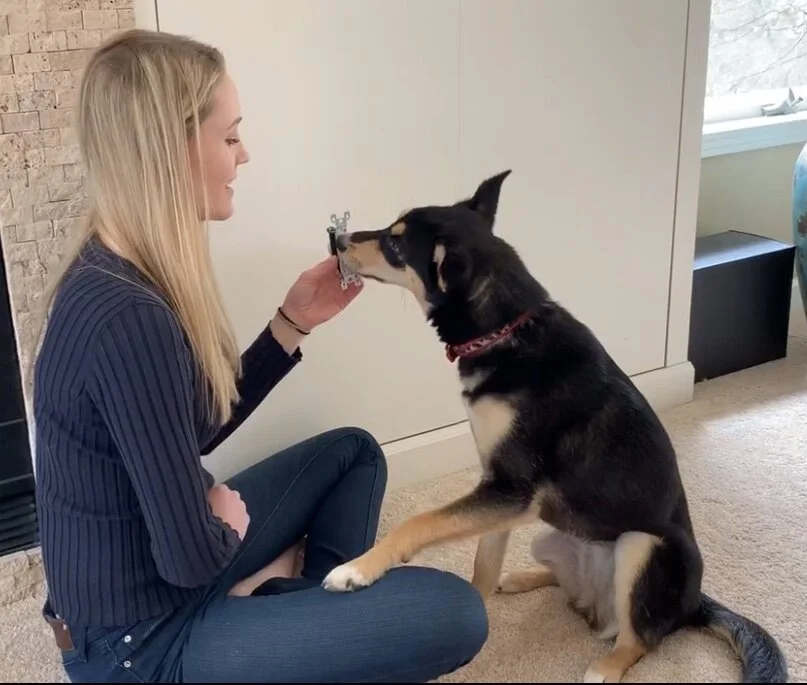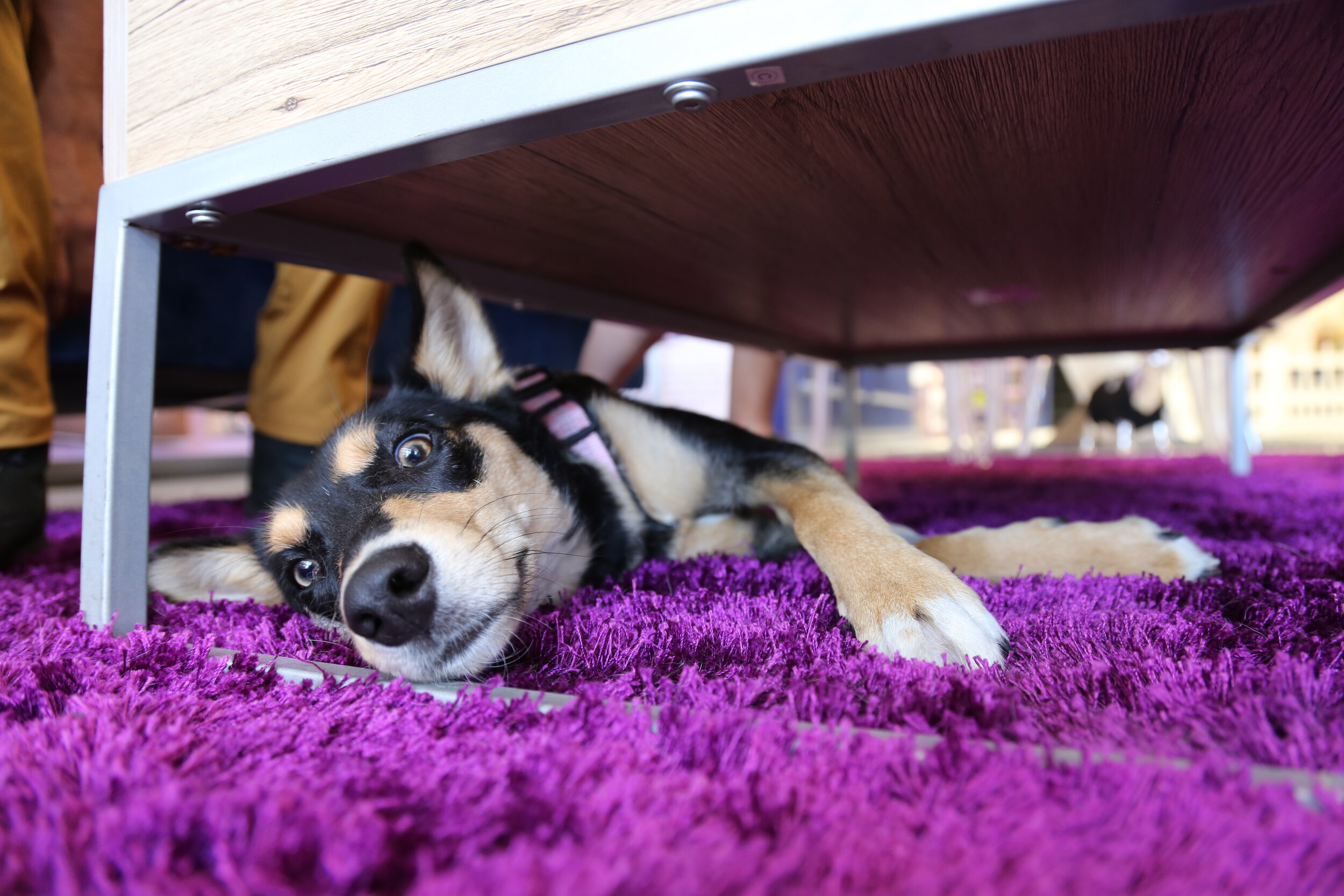
VANDERPUMP
VETERANS PROGRAM
Our mission is to provide assistance and improve the lives of members of our heroic Veteran community suffering from Post Traumatic Stress Disorder, through a deserving shelter pet that will serve as a companion animal for our service men and women.
Working alongside the Toni Brooks Foundation, New Directions and Raven Drum Foundations, The Vanderpump Dog Foundation can provide dogs at no cost to Veterans adopting from The Vanderpump Dogs Foundation. As part of the adoption process we will match veterans with the best dog companion for them, followed by extensive training to help with Post Traumatic Stress Disorder. Vanderpump Dogs will utilize a Board-certified animal trainer named Madeline Quint to execute the training program over a 90 to 120-day period. The program begins with a 30-day intensive Board and Train with Ms. Quint then transitions into a 60 to 90-day intensive human / service dog training where Ms. Quint will work with our veterans alongside their service animal.
BENEFITS OF COMPANION ANIMALS FOR VETERANS WITH PTSD
Veterans have a much higher risk of developing Post Traumatic Stress Disorder (PTSD). About 11-20% of veterans from Operations Iraqi Freedom and Enduring Freedom have developed PTSD symptoms. That is an extraordinary number of people who need help dealing with PTSD symptoms. People with PTSD often struggle with emotional numbness, night terrors, depression, paranoia, and loneliness. Studies have shown that emotional support animals (ESA), especially dogs, help sooth many PTSD symptoms in veterans. A 2018 study by researchers at Purdue University concluded that ESA dogs lowered PTSD symptoms, improved the quality of life, and increased social participation among veterans. Of the 141 veterans in this study, the group with the ESA dog reported much better mental health and well-being than the group without an ESA dog. A similar study released in 2016 by the American Psychiatric Association found similar results. The group in that study that had an ESA dog reported great happiness, decreased stress, and better relationships than the group without. What both of these studies clearly show is that ESA animals, especially dogs, have a significant impact on a veteran’s mental health and overall well-being. It is no wonder then that ESA dogs are becoming a very common treatment option for veterans and others with mental health issues. Any rescue from Vanderpump Dogs can be trained as an ESA.
PROGRAM DETAILS
It is no easy task to find a dog and simply train it to be a companion dog. Any dog can be your companion animal and can help reduce your stress, anxiety, and more, but training a dog to work or perform tasks for someone with disabilities is very different.
“Typically rescue dogs come with some history and it’s my job as the trainer to help them adjust to a new life, figure out if they have any triggers, and help them heal from their past. This adjustment period takes time and is a very delicate situation since you are reshaping how the dog see’s the world.”
In our Vanderpump Veterans Program, our aim is to help save a rescue pup and give it a second chance at life, while simultaneously training them to be their new Owner’s second chance as well. Our goal is to pair Veterans with a dog that has been rehabilitated from a severe medical or neglectful situation - allowing both the dog and the Veteran to bond in their new life together. Taking a rescue dog and turning it into a working dog is a challenging task that requires knowledgable experience from the rescuers and the trainer. When picking a rescue dog, one needs to remember that they have a history. In order for the dog to be picked for the program they need to pass a temperament test, show a willingness and desire to please people, and have a certain drive/motivation to train. Once the dog is picked he or she begins the next step of their journey.
For example, in the beginning, Roxi (the first dog in the #VanderpumpVeterans program) was afraid to leave the house because she wasn’t confident anywhere else. She was hit by a car so when anyone drove by she would go into flight mode and try to run away and hide. Therefore, that was our first obstacle in training; Roxi needed to gain her confidence back and get over her fear of cars.
Once you move past the dogs fears, we begin obedience training. In order to be a Service/Companion animal a dog must know Basic Obedience. These fundamentals are a bridge to the rest of the training required for a dog to help someone with PTSD. By the time the dog meets their life long companion, they’ve spent over 90 days with Madeline, learning the required tasks. Some of these are waking up their companion if they’re having a nightmare, turning on lights, retrieving objects, and easing their anxiety when they recognize their owners trigger.
Before the dogs leave with the Veteran, there must be a proper introduction. The dogs need time to get to know the person and the Veteran needs to understand their new friend and helper. This step requires 30 days to teach the Veteran the dog’s basic obedience commands, ways to motivate and reward them and handling techniques. They need to understand how to properly respond to the dog’s behavior and how to communicate with them. Once the Veteran and the dogs are acquainted and have gone through the training together they are ready to go off on their own journey. However, they are required to check in and personally meet with Madeline over the years to come.
Training a dog to work or perform tasks for someone with PTSD requires intensive training to ensure the dog is ready to help their handler live their best life.







WE NEED YOUR HELP
It can cost upwards of $25,000 to board and train each dog that fits the Vanderpump Veterans Program.
Our goal is to reach this number with each #VanderpumpVeterans pairing through a combined effort of sponsorship, peer-to-peer fundraising, and donations.
SPONSORSHIP & GIVING OPPORTUNITIES
Support A Service Dog's Board & Train
Support our rescues and veterans by donating to the Vanderpump Veterans Board & Train Program! Your donation will go towards covering the cost of professional service dog training, educational programming, administrative fees and more that keep the Vanderpump Veterans Program going!
Can be sponsored through one-time giving or recurring donations.

START YOUR OWN FUNDRAISER FOR THE VANDERPUMP VETERANS PROGRAM!
Motivate your social circle to support a cause near to your heart!

SPONSOR A RESCUE’S MEDICAL NEEDS
Often the dogs destined for our Board & Train Program have major medical needs prior to beginning. Also, throughout the Program, donors can help us provide a monthly check ups, necessary vaccinations, spay/neutering etc. If the donor wishes, they can provide a donation for future needs as well - to have for the dog in case there is a medical need in the future, so the Veteran does not have to pay for this cost! Often times these emergency surgeries can cost up to $5000!
GIFT IN KIND
You can support our program by donating a gifts our rescues! Instead of giving a monetary contribution to our program, you can also gift items our rescues will need during their Board & Train!
LEGACY GIVING
Philanthropy and individual gifts have been essential in shaping our organization, and these contributions have an important role in its promising future. Your actions now will have a profound impact on the programs and services vital to helping our programs.








